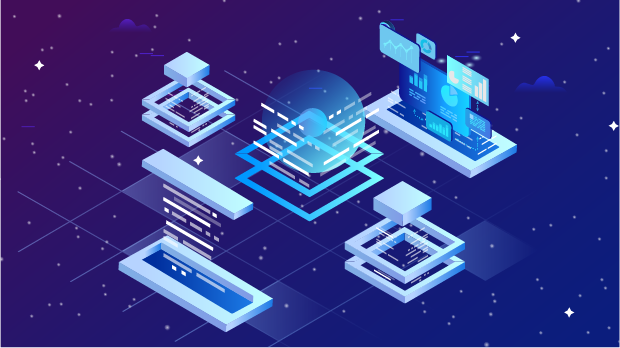In the world of online proxy services, two key players, PYPROXY and Tamilmv Proxy, have attracted attention for their capabilities in delivering download speeds under static ip proxy conditions. As the demand for faster and more secure browsing grows, users need to consider which proxy service can better serve their specific needs. In this article, we will provide an in-depth comparison of the download speeds offered by Pyproxy and Tamilmv Proxy, analyzing factors such as connection reliability, latency, and overall performance. Our aim is to equip users with the insights needed to choose the best proxy for optimized download speeds. Introduction to Static ip proxies and Their ImportanceBefore diving into the specific comparison between Pyproxy and Tamilmv Proxy, it’s important to understand what static IP proxies are and why they are essential. A static IP address is a fixed, unchanging IP address assigned to a user or device. Unlike dynamic IP addresses, which can change over time, static IP addresses ensure that the user always connects from the same point. This is crucial for activities such as downloading large files, streaming, or accessing restricted content, where a consistent and stable connection is required.Static IP proxies offer a range of benefits, including:1. Stable and Consistent Performance: Static IPs provide uninterrupted access, which is ideal for tasks that require reliable connections.2. Enhanced Security: Using a static IP can enhance security by preventing IP bans or restrictions commonly associated with dynamic IP proxies.3. Faster Speeds: In certain cases, static IP proxies can offer faster speeds due to less congestion and fewer interruptions compared to dynamic proxies.Overview of PyproxyPyproxy is a popular proxy service that utilizes static IP addresses to offer users enhanced control over their internet traffic. It is known for its fast and reliable connection, which makes it an appealing choice for downloading large files, accessing geo-restricted content, and maintaining privacy online.Some notable features of Pyproxy include:- Dedicated IPs: Pyproxy assigns users dedicated static IPs, which ensures no sharing of resources, leading to better performance and faster download speeds.- Low Latency: Pyproxy’s infrastructure is optimized to minimize latency, ensuring smooth data transmission, which is crucial for faster downloads.- Security: Pyproxy focuses on encryption and privacy, providing users with a secure connection that protects sensitive data during downloads.In terms of download speeds, Pyproxy is known for delivering relatively fast speeds across different regions. The stable static IP ensures that users can enjoy consistent and reliable performance, even during peak hours.Overview of Tamilmv ProxyTamilmv Proxy, another prominent player in the proxy service market, is also known for its static IP offerings. It is popular for its focus on high-speed connections and minimal downtime. Tamilmv Proxy is often used by users who need access to large file downloads, streaming, and gaming, where speed and reliability are paramount.Key features of Tamilmv Proxy include:- Global Coverage: Tamilmv Proxy offers static IPs from various locations, ensuring users can access content from different regions with minimal lag.- Optimized for High Traffic: Tamilmv Proxy’s infrastructure is designed to handle high traffic volumes, providing users with fast download speeds even during high-demand periods.- Enhanced Performance: Tamilmv Proxy has a reputation for offering good speeds with low latency, ensuring minimal delays in downloads.In terms of performance, Tamilmv Proxy has been praised for its ability to deliver fast and reliable speeds, especially in regions where internet speed is typically slow or inconsistent.Comparison of Download SpeedsNow, let’s compare the download speeds of Pyproxy and Tamilmv Proxy in a static IP environment. While both services promise high speeds and stable connections, there are several factors that can impact performance.Connection ReliabilityWhen it comes to connection reliability, both Pyproxy and Tamilmv Proxy offer stable connections, but there are subtle differences. Pyproxy’s infrastructure is generally known for its low latency and stable connections, which are particularly beneficial when downloading large files. Tamilmv Proxy also provides reliable connections, but some users report slight fluctuations in performance during peak usage hours, especially in regions with high traffic.Download Speed Performance in Different RegionsBoth Pyproxy and Tamilmv Proxy offer decent download speeds across various regions. However, Pyproxy tends to provide more consistent speeds across the board, regardless of location. Its dedicated static IPs and optimized routing contribute to fewer speed drops, especially in less-developed regions.Tamilmv Proxy, on the other hand, shines in regions where internet speeds are typically slower. Its infrastructure is optimized for high-traffic areas, so users in such locations may experience better speeds compared to Pyproxy. However, users in areas with higher competition for bandwidth may experience occasional speed reductions.Latency and Download SpeedLatency plays a crucial role in download speed. Lower latency generally translates to faster downloads. Pyproxy is known for its exceptionally low latency, making it a strong contender when it comes to minimizing delays and maximizing download speeds. Tamilmv Proxy also offers low latency, but its performance may vary depending on the region and server load.For users who prioritize consistent low-latency connections, Pyproxy tends to have the upper hand in terms of overall performance.Traffic Management and Bandwidth AllocationIn terms of traffic management, Pyproxy is particularly adept at ensuring that each user gets a fair share of the available bandwidth. Because users are assigned dedicated static IPs, the chances of congestion are reduced, leading to more consistent download speeds.Tamilmv Proxy, while also offering dedicated static IPs, sometimes experiences bandwidth throttling during peak traffic hours, especially if the demand exceeds the available bandwidth. This can lead to slower download speeds, particularly for users who are downloading large files at the same time as others.Security and Privacy ConsiderationsWhile security and privacy are not directly related to download speeds, they do impact overall user experience. Both Pyproxy and Tamilmv Proxy offer secure connections with encryption to protect users’ data during downloads. However, Pyproxy tends to have an edge in terms of additional security measures, such as IP masking and enhanced encryption protocols, which provide extra layers of protection for users.Which Proxy Service Offers the Best Download Speed?When choosing between Pyproxy and Tamilmv Proxy, the decision largely depends on the user’s location and specific needs. If a user values consistent performance with minimal latency, Pyproxy stands out as the better choice. Its infrastructure and dedicated static IPs offer a more reliable and faster download experience in most regions.On the other hand, Tamilmv Proxy may be the better option for users in regions where high-traffic congestion is common, as its optimized performance for such areas can help mitigate slow download speeds. However, users should be mindful of occasional performance drops during peak usage times.Both Pyproxy and Tamilmv Proxy offer strong download speeds in a static IP environment, with each having its strengths and weaknesses. Pyproxy excels in providing stable, low-latency connections across a wide range of regions, while Tamilmv Proxy offers optimized performance in high-traffic areas. Ultimately, the choice between the two services comes down to the user’s specific needs and the region in which they are located.
Sep 29, 2025



































































